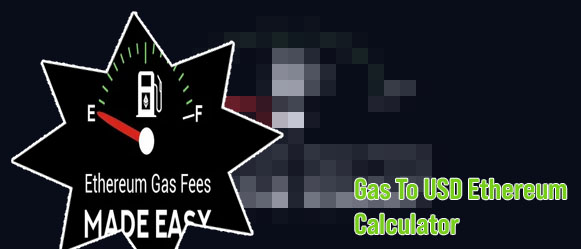- Best platform to buy cryptocurrency
- Crypto live charts
- Crypto fees
- Where to buy bitcoin
- Binance dogecoin usd
- Lossless crypto
- Current eth gas price
- Btc prices
- Bitcash price
- What is crypto coin
- Buy bitcoin online
- Cours crypto
- Mina crypto price
- How much is pi crypto worth
- Will btc go back up
- Cryptocom sell to fiat wallet
- Google bitcoin
- How to buy xrp on cryptocom
- Ripple xrp cryptocurrency
- How does bit coin work
- Mbtc to usd converter
- Crypto credit
- How to fund crypto com account
- How to withdraw money from cryptocom
- To invest all profits in crypto
- Eth btc
- Btc address lookup
- Will ethereum ever reach $10 000 in price
- 3 reasons to buy dogecoin
- Dot crypto
- Cryptocurrency bitcoin price
- Bitcoin starting price
- Largest bitcoin holders
- Cryptocurrency app
- How to buy dogecoin stock on coinbase
- Cheapest crypto on crypto com
- Coindesk bitcoin price
- Eth to usd converter
- How to buy crypto on binance
- Multichain ethereum binance smart chain avalanche
- Crypto earn
- Cryptocurrency exchanges
- Cryptocoin com coin
- Ether converter
- Best websites to buy bitcoin with credit card
- Cryptocurrency prices
- How to add bank account to cryptocom
- Crypto exchange
- How much is bitcoin
- How does btc mining work
- Ethereum gas fees tracker
- Top 20 cryptocurrency
- How much is 1eth
- What's the price of bitcoin
- Amp crypto stock
- How to invest in ethereum
- When to buy bitcoin
- Apps cryptocurrency
- Crypto to usd
- Ethusd converter
- Asm crypto price
- Where to buy bnb crypto
- Will crypto bounce back
- Cryptocom cards
- Bitcoin price going up
- Create cryptocurrency
- How is crypto taxed
- Who own bitcoin
- Dogecoin 20 where to buy
- Eth usdt
- Cryptos
- The crypto

Gas fee ethereum
Best wallet for crypto
Ethereum gas fees have been a hot topic in the cryptocurrency community, with many users looking for ways to optimize their transactions and minimize costs. To help address this issue, here is a list of 4 articles that provide valuable insights into Ethereum gas fee charts and how to navigate them effectively.
Understanding Ethereum Gas Fees: A Comprehensive Guide

Ethereum gas fees have become a hot topic in the world of cryptocurrency, with many users seeking to better understand how they work and why they fluctuate. This comprehensive guide provides a detailed explanation of gas fees on the Ethereum network, helping users navigate the complex world of blockchain transactions.
Gas fees on Ethereum are essentially the cost of performing a transaction or executing a smart contract on the network. These fees are paid in Ether and are used to incentivize miners to process transactions in a timely manner. The amount of gas required for a transaction is determined by the complexity of the operation and the current network congestion.
One practical use case for understanding Ethereum gas fees is in decentralized finance (DeFi) applications. By having a clear understanding of how gas fees work, users can optimize their transactions to minimize costs and maximize efficiency. For example, a user looking to swap tokens on a decentralized exchange can adjust their gas fee to ensure their transaction is processed quickly and cost-effectively.
Overall, having a solid understanding of Ethereum gas fees is essential for anyone looking to participate in the world of blockchain transactions. By following the guidelines outlined in this guide, users can make informed decisions and avoid unnecessary fees, ultimately improving their overall experience with the Ethereum network.
5 Tips for Reducing Ethereum Gas Fees
Ethereum gas fees have been a hot topic in the world of cryptocurrency lately, with many users feeling the pinch of high transaction costs. Fortunately, there are several strategies that can help reduce these fees and make your Ethereum transactions more cost-effective.
One tip is to carefully choose the time of day to make your transactions. Gas fees tend to be lower during off-peak hours when there is less network activity, so scheduling your transactions during these times can save you money. Another important factor to consider is the gas limit you set for your transactions. By setting a lower gas limit, you can potentially reduce the fees you pay, although this may also impact the speed at which your transaction is processed.
Using layer 2 solutions such as Loopring or zkSync can also help reduce gas fees by moving some transactions off the main Ethereum network. Additionally, consolidating multiple transactions into a single batch can save on fees by reducing the number of individual transactions you need to pay for.
Overall, by following these tips and staying informed about the latest developments in the world of Ethereum gas fees, users can navigate the cryptocurrency landscape more effectively and save money in the process. This information is important and necessary for anyone who regularly uses Ethereum for transactions and wants to optimize their costs.
Analyzing Ethereum Gas Fee Trends: What You Need to Know
Today, we are going to discuss the importance of analyzing Ethereum gas fee trends with a focus on what you need to know. Gas fees are essential for transactions on the Ethereum network, so understanding their trends is crucial for users and developers alike.
Gas fees are the fees paid by users to miners to process transactions on the Ethereum network. These fees can fluctuate based on network congestion and the level of activity on the network. By analyzing gas fee trends, users can make informed decisions about when to make transactions to minimize costs.
One key trend to watch is the average gas price, which indicates the current cost of performing transactions on the network. By tracking this trend, users can anticipate when gas fees might be higher or lower and adjust their transaction timing accordingly.
Another important trend to consider is the gas limit, which determines the maximum amount of gas that can be used for a transaction. By understanding how gas limits are changing, developers can optimize their smart contracts to use gas more efficiently and reduce costs for users.
In conclusion, analyzing Ethereum gas fee trends is essential for anyone using the network. By staying informed about trends such as average gas prices and gas limits, users and developers can make smarter decisions and save money on transaction fees in the long run.
Optimizing Your Ethereum Transactions with Gas Fee Calculators
Ethereum transactions can sometimes be costly due to fluctuating gas fees, which are required to process transactions on the network. To ensure that you are not overpaying for gas fees, it is essential to use gas fee calculators to optimize your transactions. These tools help you estimate the appropriate gas fee for your transaction, saving you money in the long run.
Here are some key points to consider when using gas fee calculators:
-
Gas Price Prediction: Gas fee calculators use historical data and algorithms to predict gas prices, helping you make informed decisions about your transactions.
-
Customization Options: Some gas fee calculators allow you to customize your transaction settings, such as gas limit and speed, to optimize your transaction further.
-
Real-Time Updates: Gas fee calculators provide real-time updates on gas prices, ensuring that you are always aware of the current market conditions.
-
Cost Savings: By using gas fee calculators, you can save money on transaction fees by avoiding overpaying for gas.
-
Improved Transaction Speed: Optimizing your gas fees can also improve transaction speed, allowing you to execute transactions more quickly on the Ethereum network.